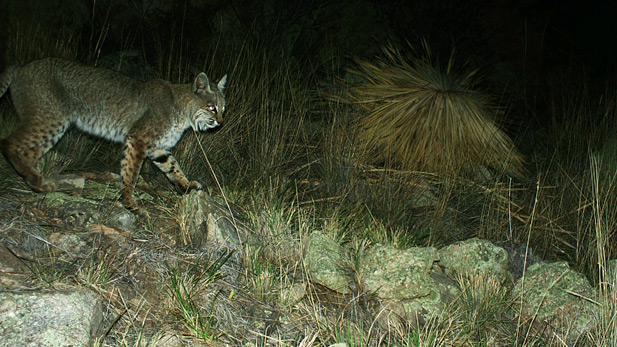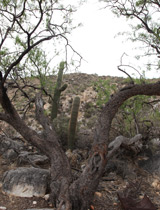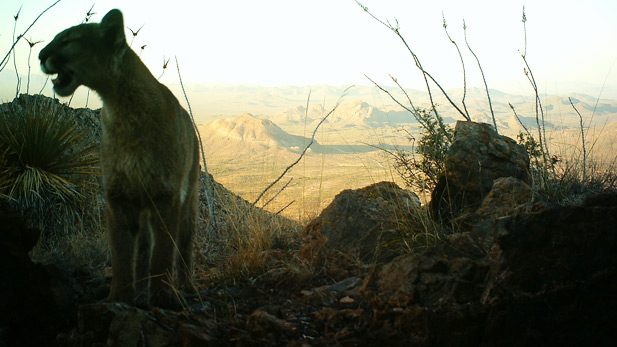 Bobcat photographed in the mountains west of Tucson.
Bobcat photographed in the mountains west of Tucson.Listen:
Researchers from the U.S. Geologic Survey and the University of Arizona are taking part in a three-year project to photograph jaguars and ocelots living in the mountains surrounding Tucson.
The scientists have camera traps set up at more than 200 places in the mountains. Once a month, the scientists hike into the mountains to check the cameras, change the batteries, swap out the memory cards and perform general maintenance.
Melanie Culver, a geneticist with USGS and the UA, said the cameras are set up along trails scientists expect to see big cats traversing. They are having mixed results.
In the mountains west of Tucson, they have not spotted any jaguars so far, but other animals are frequently photographed.
“Mostly mountain lion, bobcat and fox and deer,” Culver said.
These mountains are the same ones where Macho B lived. He was a jaguar that came to fame five years ago when he died while being tracked by state game officials. Just down the trail from current camera traps is a large mesquite tree. It was Macho B's favorite scratching post.
Culver said that spot was most likely the lowest altitude Macho B frequented and also the closest to Tucson. Off in the distance, the western suburbs of Tucson can be seen in the early morning sun.
 Macho B's scratching post in the mountains west of Tucson.
Macho B's scratching post in the mountains west of Tucson.While the cameras in the mountains are not snapping pictures of jaguars, the same cannot be said for the cameras in the Santa Rita Mountains.
Susan Malusa, who works with Culver, said those cameras are consistently snapping photos of jaguars. Malusa said the longest period of time in they have gone without detecting the big cat is 31 days. Those cameras are also capturing images of two ocelots.
To help study the jaguar, the research team is also using a dog that was specially trained to find jaguar scat. Culver said the dog allows researchers to study the genetics and diet of the jaguar.
The cameras don’t discriminate what pictures they take. That means by the time the project finishes, a data base of more than 2 million photos of all types of Arizona wildlife will be available to researchers.
Those photos include time, place, and some even have climate data attached. Culver and Malusa say that type of data will be a boon for researchers in a many fields.
 Mountain lion in the mountains west of Tucson.
Mountain lion in the mountains west of Tucson.
By submitting your comments, you hereby give AZPM the right to post your comments and potentially use them in any other form of media operated by this institution.